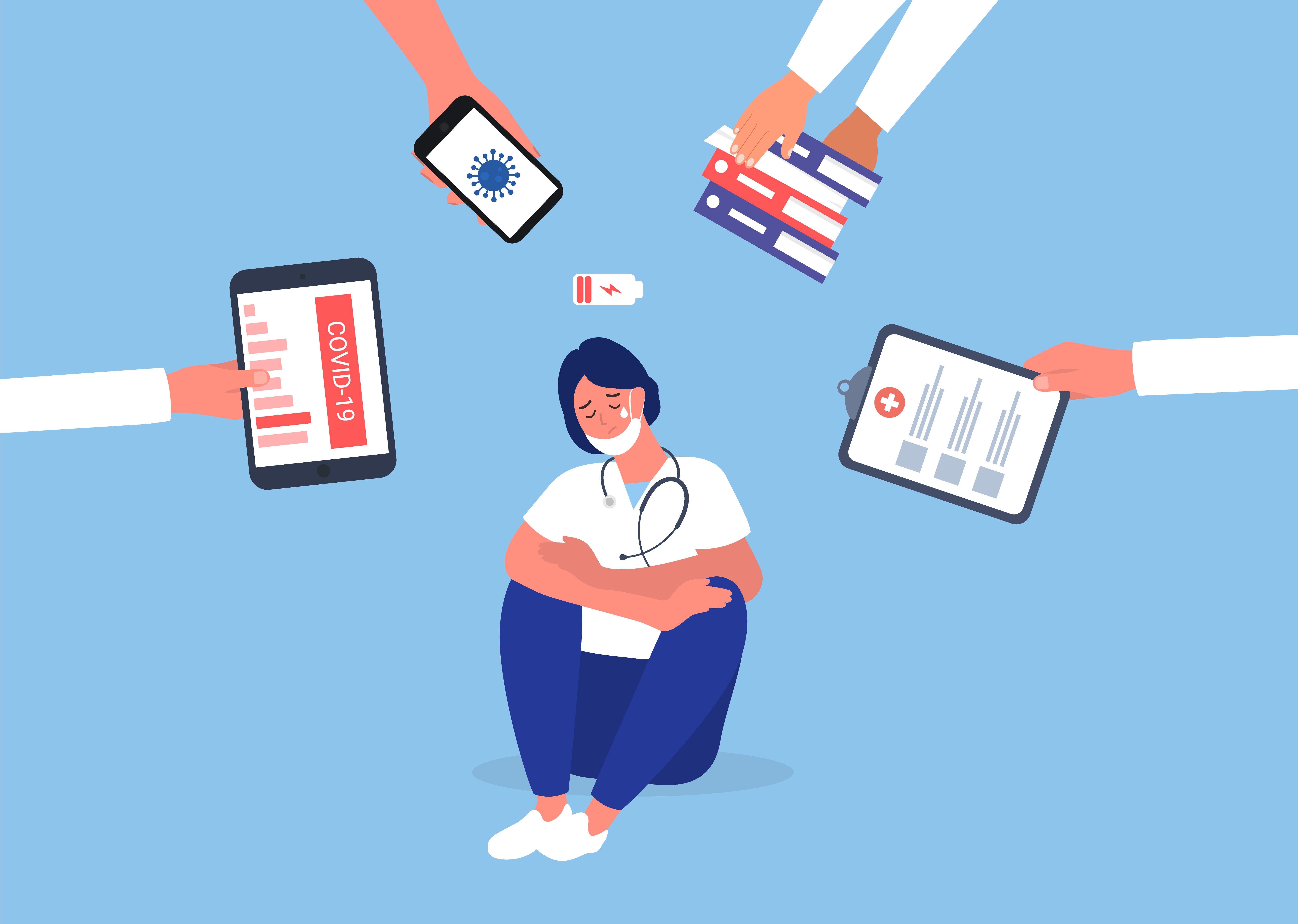| Today's Top Story | | For This School Nurse, Every Day Feels Like a 'War Zone' |  | Is there a "right" way for schools to respond to the Omicron surge? In Chicago, a clash between the mayor—who opposed remote learning—and the teacher's union—which said classrooms were unsafe—led to a closure of schools altogether during the first week of January. The following week, students at Brooklyn Technical High School in New York City walked out in protest over in-person learning mandates, sparking more protests around the country.
As we talked about these events as a news team, we felt pretty ill-equipped to pass judgment on "good" versus "bad" school policies. So we asked one of our writers, Amy, a school nurse in California, how her school is navigating Omicron and how she felt about that.
Amy shared that the last three weeks have been the most stressful days of her career. Her normal day-to-day duties have not gone away—she still needs to administer insulin to kids with type 1 diabetes, for example—but mainly, she's become a COVID-19 testing machine for students and staff alike. As the school staff works to track positive cases, monitor exposures, and follow highly-specific protocols for each, she says work feels more like a COVID crisis center than a school.
Still, Amy does not want her school to close.
"Running a makeshift testing center has given me the insight and the data to understand that COVID-19 is not spreading in the classroom; it is being brought into the school via community exposure," she said, noting this is an indication that safety measures like masking work. "The true heroes of this pandemic are the students that come to school each day ready to learn and be with their friends even though the adults around them are in crisis mode." | | Know More | | In school districts like Amy's, protocols get down to the nitty gritty. Quarantine rules are different for those who test positive, those who have a family member test positive, those who were exposed to COVID while wearing a mask, and those who were exposed while maskless. Vaccination status determines the course of action, too. | | Feel Better | | The prevalence of COVID-19 in kids is alarming. But most kids who contract the virus do just fine. Doctors are urging the FDA to authorize vaccines for kids under 5 ASAP. | | |  | | Masking At School Works | | Wondering exactly how effective something as simple as wearing a mask can be? A CDC study published in the fall found that schools without masking requirements were 3.5 times more likely to have a COVID-19 outbreak than those that required masking. Researchers looked at over 1,000 K-12 public schools in Arizona for the analysis. | | | | What Does Omicron Look Like In Kids? | | We've heard a lot about how Omicron is milder than other strains of COVID-19. We've also heard a lot about how cases are skyrocketing in kids. Kids seem to have slightly different Omicron symptoms than adults, though most evidence is anecdotal and studies on the matter are small. Like adults, kids may experience cough, fatigue, congestion, runny nose, or headache. But pediatricians add that fever, vomiting, diarrhea, and a croup-like cough are cropping up in kids as well. | | | |
 | | Verywell writer Amy Isler shares how parents can best support schools in order to keep in-person learning up and running. |  | | If you have a school-aged child, the best way you can help is to be patient and flexible. The school staff are doing their absolute best to manage the influx of positive cases. If you receive a call or email from the school, please answer it right away and provide them the information they need. | |  |  | Amy Isler, RN, MSN, CSN,
Certified school nurse
| |
No hay comentarios:
Publicar un comentario